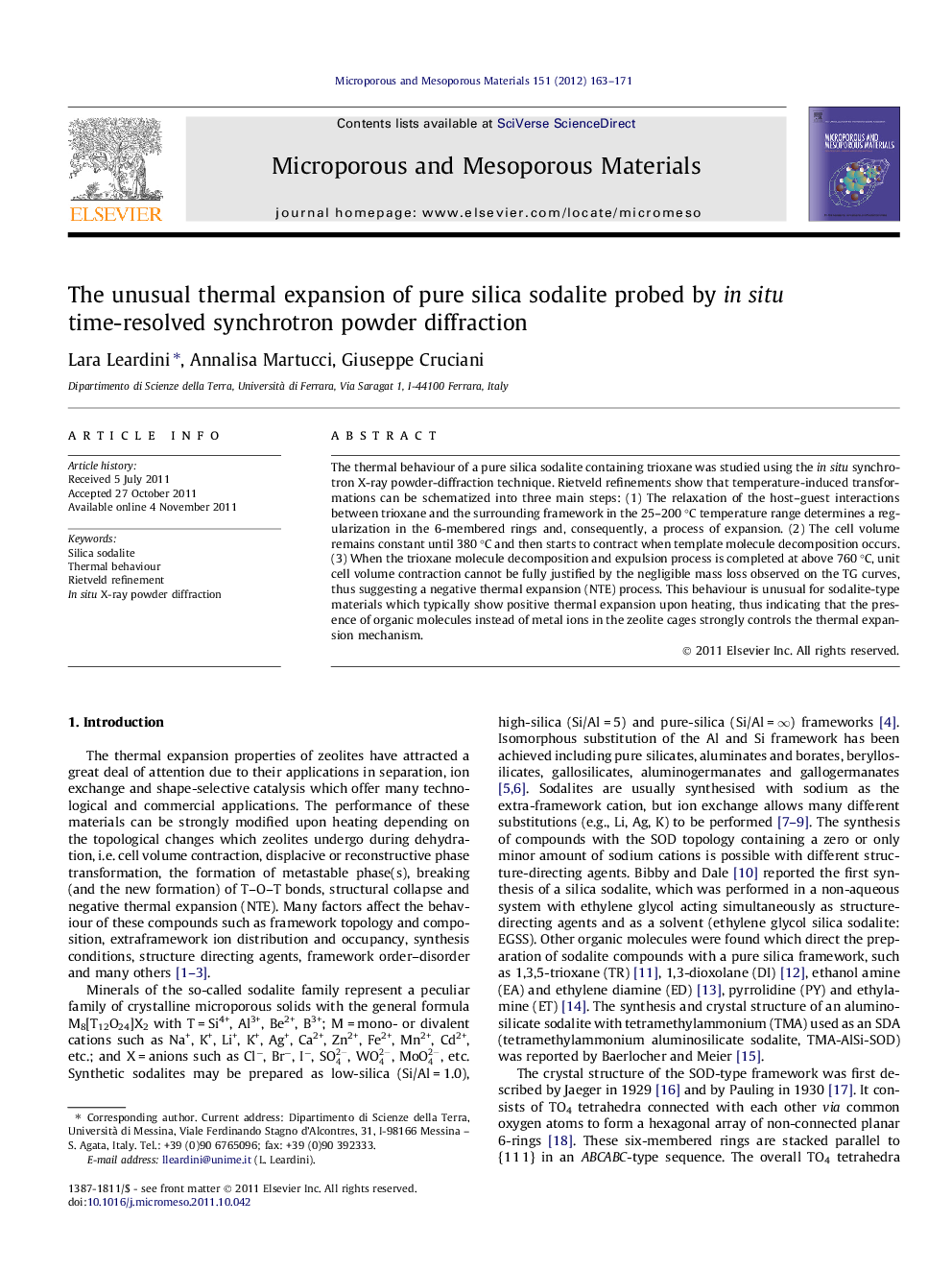| Article ID | Journal | Published Year | Pages | File Type |
|---|---|---|---|---|
| 74926 | Microporous and Mesoporous Materials | 2012 | 9 Pages |
The thermal behaviour of a pure silica sodalite containing trioxane was studied using the in situ synchrotron X-ray powder-diffraction technique. Rietveld refinements show that temperature-induced transformations can be schematized into three main steps: (1) The relaxation of the host–guest interactions between trioxane and the surrounding framework in the 25–200 °C temperature range determines a regularization in the 6-membered rings and, consequently, a process of expansion. (2) The cell volume remains constant until 380 °C and then starts to contract when template molecule decomposition occurs. (3) When the trioxane molecule decomposition and expulsion process is completed at above 760 °C, unit cell volume contraction cannot be fully justified by the negligible mass loss observed on the TG curves, thus suggesting a negative thermal expansion (NTE) process. This behaviour is unusual for sodalite-type materials which typically show positive thermal expansion upon heating, thus indicating that the presence of organic molecules instead of metal ions in the zeolite cages strongly controls the thermal expansion mechanism.
Graphical abstractFigure optionsDownload full-size imageDownload as PowerPoint slideHighlights► In situ dehydration of trioxane silica sodalite was studied between 25 and 850 °C. ► Up to 200 °C, the regularization of 6MRs is accompanied by a volume expansion. ► Above 380 °C template molecules decomposition inverts this trend. ► After calcination, the unit cell volume contraction unusually continues. ► The organic molecules strongly controls the thermal expansion mechanism.
